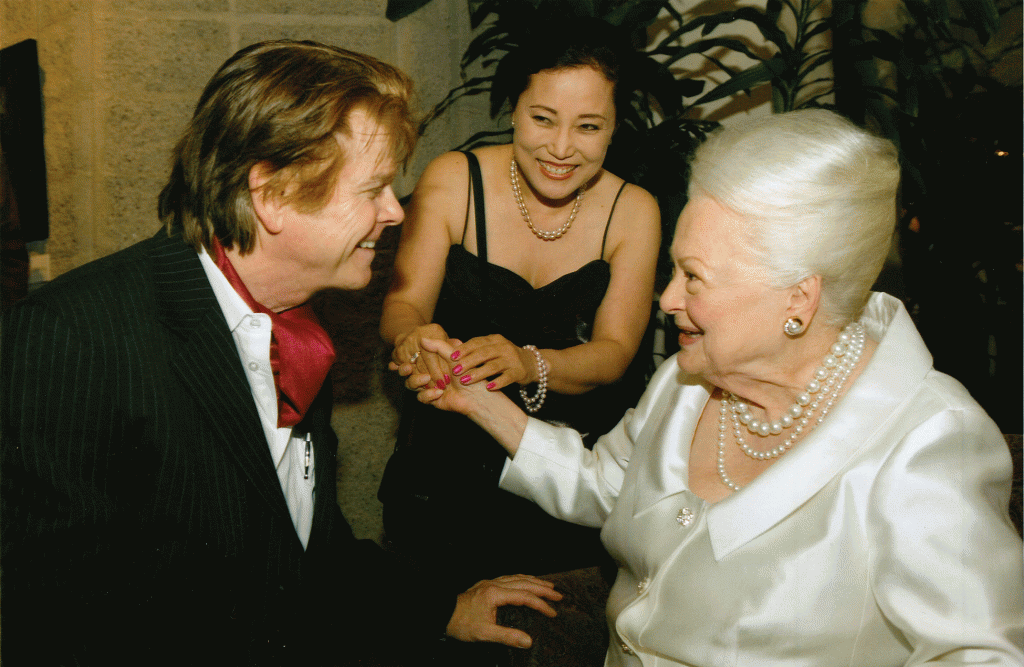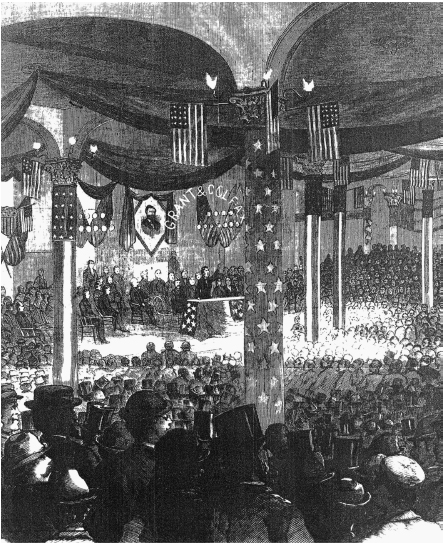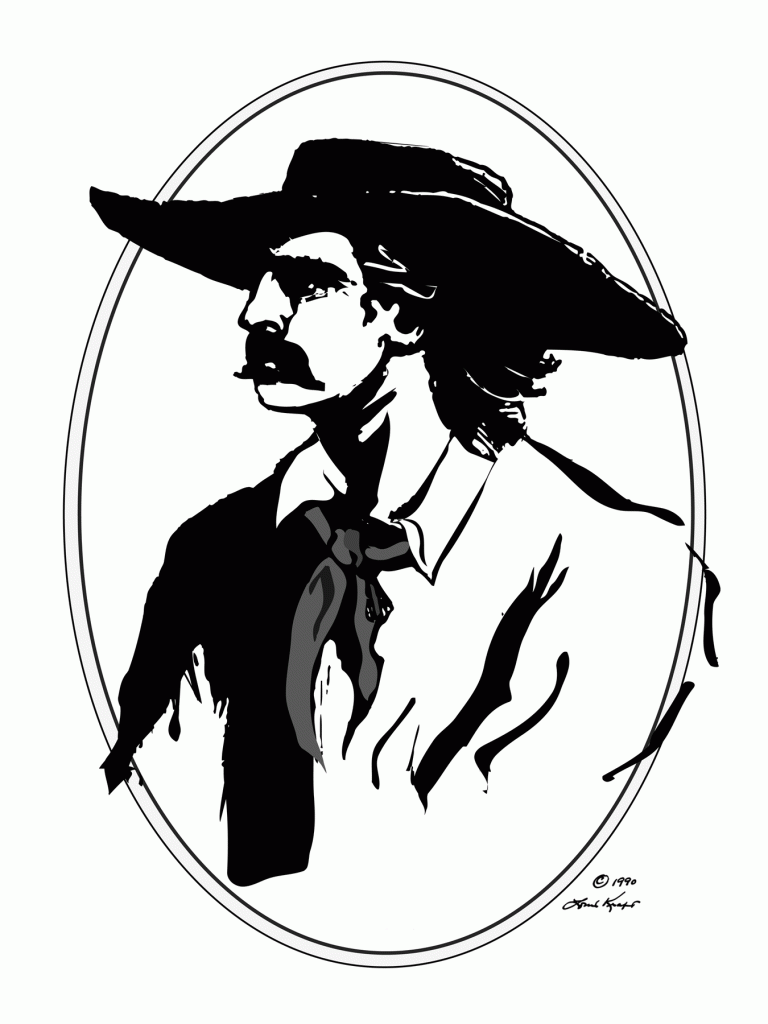Website & blogs © Louis Kraft 2013-2020
Contact Kraft at writerkraft@gmail.com or comment at the end of the blog
I thought that tomorrow I would return to the USC Warner Bros. Archives to continue research on the Flynn/de Havilland book. Not to be, for USC has entered finals, which means that the library system shuts down. As the archives is now part of the library system, it also shuts down. I now won’t be able to research at the archives until May 22 and I’ve signed up for all three available days (Wednesday through Friday, May 22-24).

LK, Diane Moon, & Olivia de Havilland. We are at the Academy of Motion Pictures Arts and Sciences in Beverly Hills, Ca., in June 2006. Olivia is being honored. “She,” Olivia would whisper to me upon meeting Diane this night, “is exquisite.” And she was—hell, Diane is beautiful. I have tried so hard to eliminate her from my past, but she is front and center in much of my writing projects, and I can’t do it. This isn’t because of the memories, for they are good. All I can say, is that we are no longer a couple. Our relationship ended in 2011 (and I hope that this satisfies her). My past is mine, mine, never to be jettisoned to the circular file, and doubly so when related to what I write about. I have stated the truth about Diane’s & my past. Enough said about a relationship that no longer exists. I should add that Diane and Olivia liked each other and spent time together again in 2009.
I’m good with this; hell, I’m good with everything. There is absolutely nothing to get upset over.
Look on the bright side, …
I delivered the final Sand Creek proposal to Chuck Rankin at OU Press last Sunday, April 28. This will lead to him pitching the proposal and us agreeing to and signing a contract. Until that contract is signed, I have time to complete a bunch of articles that are long overdue.
At the moment I’m struggling to remember what I said about Ned Wynkoop in Centennial, Colorado, last month. Read that I’m trying to write an article based on the talk. This is important stuff, for it defines Wynkoop, it defines his guts to stand firm against the press, the military, and the U.S. government, for he absolutely refused to again be what he called an “accessory to the crime” of systematic slaughter of American Indians. This, my friends, took guts.

This image was created during a rally for Grant’s bid to become president of the USA in October 1868 at the Cooper Union in New York City, two months before Ned Wynkoop also spoke before a standing room only crowd at the same hall. Image from Leslie’s Illustrated Newspaper (November 7, 1868). (Louis Kraft personal collection)
When questioned about solving the “Indian problem” at the famed Cooper Union in Manhattan in December 1868, Wynkoop dared to say that the best way to solve the situation would be “to extend American citizenship to the Indians and allow their representatives seats in congress.” Oh yes, this man was light years before his time.
And Mr. Flynn—he had to deal with nasty stuff in the 1940s that not only didn’t go away, but after his death worse accusations surfaced that he never had the chance to contest. If you have read a lot about him, you hopefully realize that some of what you may or may not know but have read is not true. Of course, a lot of what you’ve read is true. The good and the bad (don’t know if “bad” a good word choice here), are keys to why people are interesting. (More about this in another blog.)
I’ve told you a little of about Mr. Wynkoop but really nothing about Mr. Flynn. … But my views are strong here and they are going to lead to the usage of a foul word (more than once). If you will be offended, stop reading right here.
And Wynkoop’s reward? The circular file for he refused to march in line with the extermination of a race of people. Fuck that!
Flynn’s reward? Bullshit and lies that his family has not been able to question in court for the simple reason that you can defame the dead in the USA. Great court system we have. I don’t need to repeat the offending phrase here, for you already know what it would be.
New York publishers push the bullshit of the American frontier that the public has knowledge of and buys. There are only a handful of story ideas dealing with the American past (for example: the Alamo, Custer’s last stand, the shootout at the O.K. Corral, among a handful of others). They’re not interested in the truth; rather they’re interested the rewording and reworking of the same stories over and over again. Their goal is to sell books. Since this is the only way they can avoid going out of business, I must agree with their policy. I can agree with it, but I don’t have to like or buy into it. Do you want that infamous word one more time? Why not? Fuck them! (BTW, this four letter word that begins with an “F” is now in the dictionary, so it shouldn’t shock you.) Ladies and gentlemen, some of you (and certainly me) have used this word to the extent that it is now a part of our accepted English slang word usage. Congrats! And thank you, for I’m no longer a gunslinger using a foul and unacceptable word.
In life, we have a choice. What matters, or lies and bullshit that we at times (certainly me) must sell out to and swallow because we want to put food on the table.
There is a lot of crap that has been written, published, and accepted by the public as truth. As the saying goes, “If it is in print, it must be true.” Hog wash! And those of you that believe that if something is published that it must be true—shame on you. Shame on you!
The intent of this blog was simply to say that due to the shutdown of the Warner Bros. Archives I would have the time to complete a Wynkoop article, two shorter articles on Geronimo and the Apaches, and to finally pound away on a Marilyn Monroe article before returning to the land of Errol & Olivia (2 days a week, and sometimes 3, until completion) and Sand Creek and the Tragic End of a Lifeway (4 days a week upon signing of the contract and delivery of the final manuscript three years from the date of the contract signing), along with 1 day a week for talks and articles (thus me needing to get as much of this done now). There is a Gatewood/Geronimo talk coming this fall (and I’m going to have to figure out how to cheat on time here, figure out how to buy extra time). … And I haven’t even mentioned Navajo Blood. Yikes! Perhaps it is good that there is no lady in my life, for I don’t think she’d be very pleased with me.
Other than being lonesome at times, all is good and I’m enjoying walking into my future.

